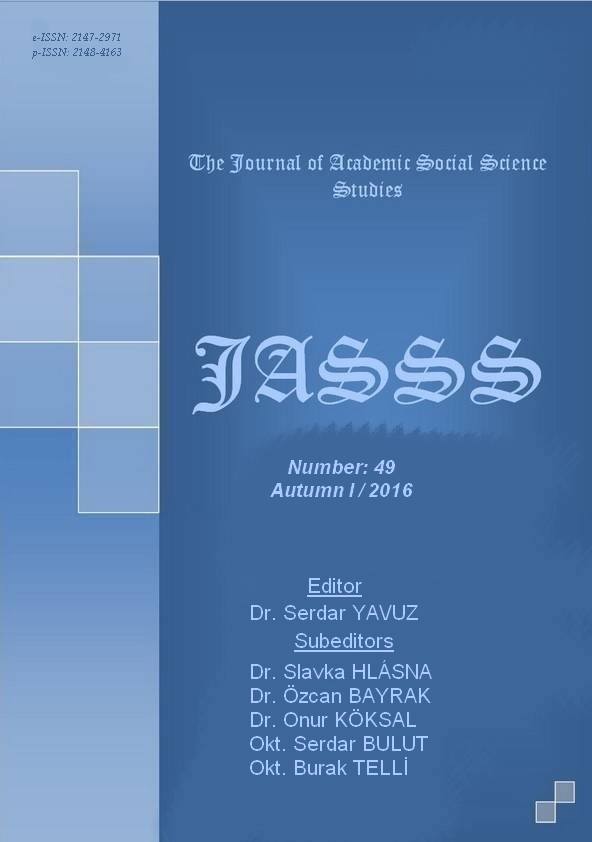Author :
Abstract
Bu çalışmanın amacı sağlık çalışanlarının örgütsel sessizlik ve çalışan performansına ilişkin algılarını belirlemek ve çalışanlara ilişkin bireysel ve demografik özelliklerin örgütsel sessizlik ve çalışan performansı üzerinde etkili olup olmadığını ortaya koymaktır. Çalışmanın evrenini Kırıkkale Halk Sağlığı Müdürlüğü, Halk Sağlığı Müdürlüğü’ne bağlı Merkez Toplum Sağlığı Merkezi (TSM) ve TSM’ye bağlı Ana-Çocuk Sağlığı ve Aile Planlaması Merkezi (AÇSAP), Verem Savaş Dispanseri (VSD) ve Halk Sağlığı Laboratuvarı’nda görev yapmakta olan tüm sağlık çalışanları oluşturmaktadır. Çalışmada örneklem seçilmemiş ve araştırmada kullanılan veri toplama aracı çalışmaya katılmayı kabul eden tüm personele dağıtılmıştır. Böylece toplam 240 adet kullanılabilir anket elde edilmiştir. Anketlerden elde edilen veri bilgisayar ortamına aktarılmış ve SPSS 20.0 paket programı kullanılarak istatistiksel analizler uygulanmıştır. Yapılan analizler sonucunda örgütsel sessizliğin alt boyutları arasında en yüksek ortalamayı duygu ve yönetici boyutunun, en düşük ortalamayı ise çalışma ortamı boyutunun aldığı belirlenmiştir. Çalışmada örgütsel sessizlik toplam puanı ile çalışanların çalışma yeri, mesleki durumu ve bulunduğu birimde çalışma süreleri ile istatistiksel açıdan anlamlı farklılık bulunurken; çalışanların performans düzeyleri ile bireysel özellikleri oluşturan tüm değişkenler arasında istatistiksel olarak anlamlı bir fark olmadığı tespit edilmiştir. Ayrıca, çalışanların örgütsel sessizlik ve performans düzeyleri arasındaki ilişkiyi değerlendirmek için gerçekleştirilen korelasyon analizi neticesinde; sağlık çalışanlarının örgütsel sessizlik toplam puanı ile performans düzeyleri arasında pozitif yönlü zayıf bir ilişki bulunmuştur (r=0,203 p
Keywords
Abstract
The aim of the present study is to determine the perceptions of the healthcare professionals concerning organizational silence and employee performance and to reveal whether personal and demographic characteristics of employees have impact on organizational silence and employee performance. The population of the study consisted of all healthcare professionals working in the Main Public Health Centre (TSM) affiliated to the Public Health Directorate of Kırıkkale Public Health Directorate and Maternal and Infant Health and Family Planning Centre (AÇSAP), Tuberculosis Control Dispensary (VSD) and Public Health Laboratory affiliated to the TSM in question. No sample was selected in the study and the data collection tool used in the study was distributed to all employees who accepted to participate in the study. Thus, 240 useable surveys were obtained in total. The data obtained from the survey have been transferred to a computer and statistical analysis using SPSS 20.0 software package was used. At the end of the analyses, it was determined that the highest mean value was obtained in the emotion and supervisor sub-dimension while the lowest mean value was obtained in the working environment sub-dimension among the sub-dimensions of organizational silence. While a statistically significant difference was found between the organizational silence total score and workplace, professional status and duration of working in the current unit, it was detected that there were not statistically significant differences between the performance levels of the employees and all variables constituting the personal characteristics. Also, the correlation analysis conducted to assess the relation between organizational silence and performance levels of employees revealed that there was a positive weak relation among the organizational silence total score and performance levels of the healthcare professionals (r=0,203 p





